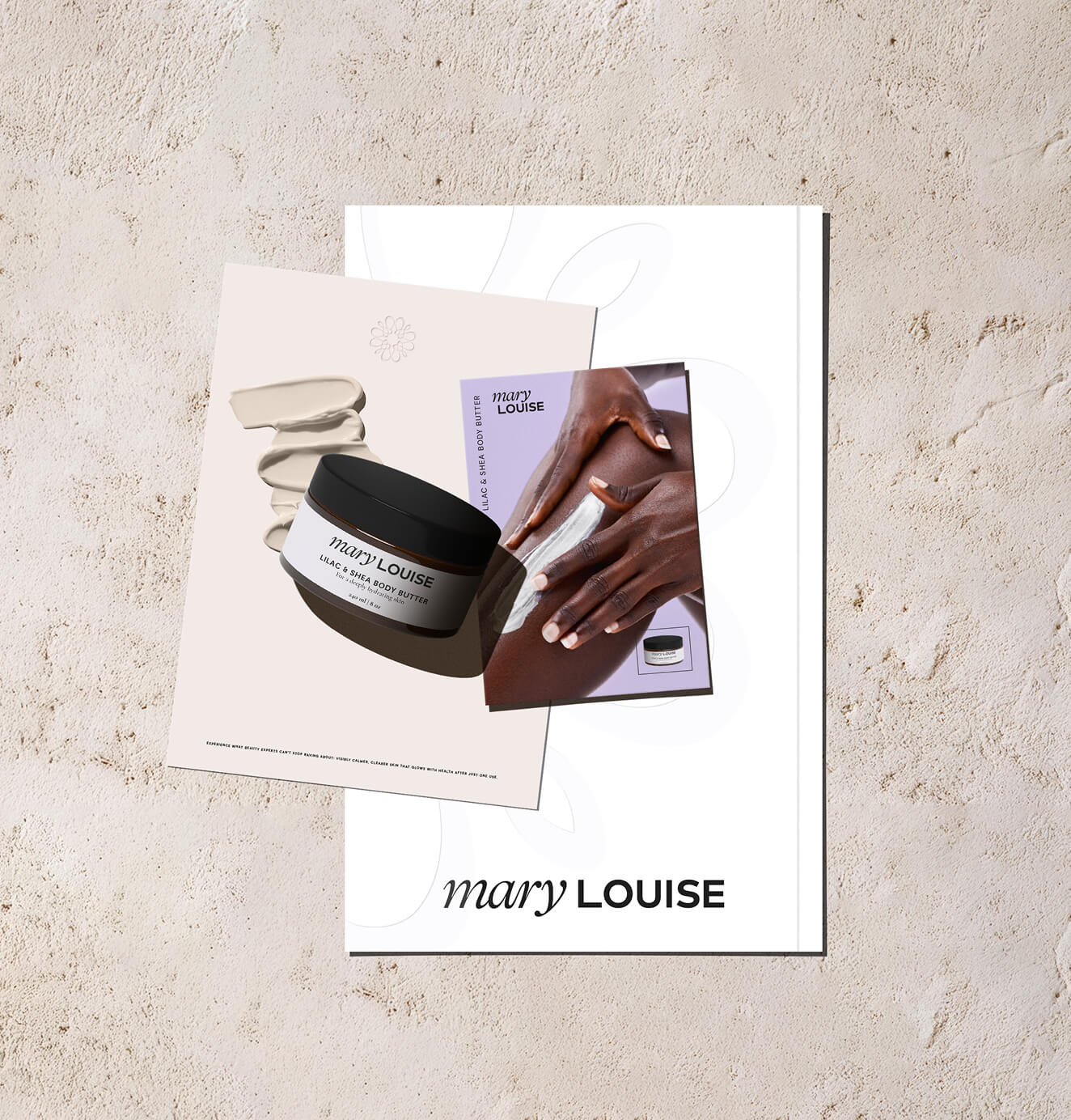Unveiling the Hidden Truth of Your Brand: The Ultimate Guide to Conducting a Thorough Brand Audit for Maximum Success!
03/11/2025
Branding / Brand Strategy
A brand audit is your secret weapon for uncovering strengths, fixing weaknesses, and aligning your brand for maximum impact—here’s how to do it right.

Welcome, fellow brand enthusiasts! Today, we're diving deep into the exciting world of brand audits. As you know, your brand is your most valuable asset, and it's essential to keep it in tip-top shape to stand out from the crowd. A brand performance audit is like a check-up for your brand, where you get to assess its health and identify areas for improvement. At The Branded Agency, we believe that conducting a brand audit should be as essential to your business as your daily dose of caffeine (which we know is crucial!). In today's fast-paced and ever-changing market, it's crucial to stay on top of your company culture external branding and game to stay ahead of the competition. In this post, we're going to share with you the ultimate guide to conducting a thorough brand audit for maximum success. We'll cover everything from why brand audits are crucial, the key elements of a brand audit, and a step-by-step guide on how to conduct one. So, grab a coffee (or your favorite beverage), and let's dive in!
.png)


How to Conduct a Brand Audit: Step-by-Step Guide + Template



Why Conduct a Brand Audit?
Let's face it: your brand is the heart and soul of your business.
It's what sets you apart from your competitors and attracts target customers to your products or services.
That's why conducting a brand audit is crucial for your business's success.
Here are a few reasons why:
A brand audit helps you assess your current branding strategy and identify areas for improvement.
By taking a closer look at your brand identity, messaging, and online presence, you can identify gaps in your branding strategy that might be hindering your business's success.
A brand audit ensures consistency across all your marketing channels.
Consistent branding creates trust and credibility with your audience and sales process, which is essential for building a strong brand and driving business growth.
A brand audit provides valuable insights into your target audience and helps you understand their needs and preferences better.
This information can be used to tailor your messaging and branding strategy to resonate better with your audience and attract more customers.
Don't just take our word for it! Statistics show that companies that prioritize their brand strategy are three times more likely to experience revenue growth.
By conducting a brand audit, you're investing in the future success of your business.
Now that we've covered the importance of a brand audit let's dive into the key elements that make up a comprehensive brand audit consists.
The Key Elements of a Brand Audit
Great, let's take a closer look at the key elements that make up a comprehensive brand audit.
- Brand Identity:
- Your brand identity is the visual representation of your brand, including your logo, colors, typography, and design elements. It's essential to ensure that your brand identity is consistent across all channels and aligns with your brand's values and messaging. Examples of best practices for brand identity include ensuring that your logo is vectorized, selecting a color palette that evokes your brand's personality and tone, and using typography that aligns with your brand's voice.
- Brand Messaging:
- Your messaging includes your brand's mission statement, value proposition, tagline, and tone of voice. A comprehensive brand audit should assess whether your messaging is consistent, clear, and aligns with your brand's values. Best practices for messaging include keeping it simple and straightforward, using language that resonates with your target audience, and ensuring that your messaging is consistent across all channels.
- Online Presence:
- Your online presence includes your website, social media profiles, and other digital channels where your brand interacts with customers. An audit of your online presence should assess whether your digital branding is consistent, engaging, and optimized for your target audience. Examples of best practices for online presence include ensuring that your website is mobile-friendly, that your social media profiles have consistent branding, and that your online content aligns with your brand's voice and values.
By taking a closer look at these key elements, you can gain valuable insights into your brand's strengths and weaknesses and identify areas for improvement.
In the next section, we'll dive into how to conduct a comprehensive brand audit step-by-step.
How to Conduct a Brand Audit
Now that we've covered the key elements of a brand audit, let's dive into how to conduct one.
Here's a step-by-step guide to help you conduct a comprehensive brand audit:
- Define Your Goals:
- Before conducting a brand audit, it's essential to define your goals and objectives. Identify what you want to achieve through the audit and what areas you want to focus on. This will help you stay focused and ensure that you're addressing the most critical areas of your branding strategy.
- Gather Data:
- Collect all relevant data related to your brand, including your website analytics, social media metrics, customer feedback, and sales data. This information will help you assess the effectiveness of your current branding strategy and identify areas for improvement.
- Assess Your Brand Elements:
- Conduct a thorough review of each of the key brand elements we discussed earlier, including your brand identity, messaging, and online presence. Use tools such as brand scorecards or checklists to help you assess each element objectively.
- Identify Strengths and Weaknesses:
- Once you've assessed each brand element, identify your brand's strengths and weaknesses. Use your data to determine which areas of your branding strategy are working well and which need improvement.
- Develop an Action Plan:
- Based on your findings, develop an action plan that outlines specific steps to improve your branding strategy. Prioritize the most critical areas that need improvement and set measurable goals to track progress.
During the brand audit, it's crucial to be objective and honest with yourself about your brand's current state.
Remember, a brand audit is all about identifying areas for improvement and setting your business up for long-term success.
Conducting a brand audit is a vital step towards building a strong, consistent, and memorable brand.
By assessing your brand's identity, messaging, marketing materials and online presence, you can identify gaps in your branding strategy and develop an action plan to improve it.
Understanding the Brand Audit Process












A brand audit is a comprehensive analysis of a brand's identity, messaging, and online presence.
It's a process that involves evaluating and assessing different elements of a brand to identify areas for improvement and opportunities for growth.
To conduct a brand audit, you'll need to follow a step-by-step process that includes the following:
- Define Your Brand's Objectives and Goals:
- Start by defining your brand's objectives and goals. What do you want your brand to achieve? What are your short-term and long-term goals? Defining your objectives and goals will help you focus your audit and identify areas that need improvement.
- Review Your Brand's Identity:
- Your brand identity is a combination of elements such as your logo, colors, typography, and visual style. Review each of these elements to ensure they are consistent and aligned with your brand's objectives and goals.
- Evaluate Your Brand Messaging:
- Your brand messaging includes your tagline, brand promise, and key messages. Review each of these elements to ensure they are clear, concise, and aligned with your brand's objectives and goals.
- Assess Your Online Presence:
- Your online presence includes your website, social media profiles, and other online assets. Assess each of these elements to ensure they are consistent with your brand's identity and messaging.
- Analyze Your Competitors:
- Analyze your competitors to identify areas where your brand can differentiate itself and gain a competitive advantage.
- Gather Feedback from Customers and Stakeholders:
- Gather feedback from customers and stakeholders to gain insights into how your brand is perceived and where improvements can be made.
By following these steps, you can conduct a thorough brand audit that will help you identify areas for improvement and opportunities for growth.
Want to learn more about brand platforms, Brand Strategy and Brand Identity? Keep reading!
If you need help with your companies brand strategy and identity, contact us for a free custom quote.
Analyzing and Applying the Results of the Brand Audit

Congratulations!
You've successfully conducted a brand audit and have collected valuable insights into your brand's current state.
But, what's next?
In this section, we'll discuss how to analyze and apply the results of your own brand equity audit.
- Analyzing Results:
- Once you've completed your brand audit, it's time to analyze the results. Look for patterns and trends across each of the brand elements and identify the areas that need improvement. Use your data to develop a clear understanding of your brand's strengths and weaknesses.
- Applying Results:
- Once you've analyzed the results, it's time to take action. Use your findings to develop an action plan to address the areas that need improvement. Identify specific steps that you can take to enhance your brand's identity, messaging, and online presence. Set measurable goals and track your progress to ensure that you're moving in the right direction.
- Potential Impact:
- The impact of a comprehensive brand audit can be significant. By improving your brand's identity, messaging, and online presence, you can increase brand awareness, customer loyalty, and ultimately, drive business growth. A strong brand can set you apart from your competitors and help you build a lasting relationship with your customers.
For example, if your brand audit reveals that your messaging is unclear or inconsistent, you can develop a new messaging strategy that aligns with your brand's values and resonates with your target audience.
By improving your messaging, content marketing customer experience, you can better communicate your brand's unique value proposition and increase customer engagement.
In conclusion, analyzing and applying the results of your brand audit is essential to improving your brand's identity, messaging, and online presence.
By taking action based on your findings, you can drive business growth and build a strong, consistent, and memorable brand. So, don't hesitate!
Start analyzing your brand audit results today and set your business up for long-term success.
What does a successful brand audit look like?
A successful brand audit is one that provides actionable insights and recommendations for improving your brand's identity, messaging, and online presence.
It should also highlight your brand's strengths and unique value proposition.
Here are some key characteristics of a successful brand audit:
- Comprehensive:
- A successful brand audit should be a comprehensive analysis of all elements of your brand, from your brand identity to your online presence.
- Objective:
- A successful brand audit should be objective and based on facts and data, rather than subjective opinions.
- Actionable:
- A successful brand audit should provide actionable insights and recommendations for improving your brand.
- Strategic:
- A successful brand audit should be strategic, focusing on how your brand can achieve its objectives and goals.
- Collaborative:
- A successful brand audit should involve collaboration with stakeholders and customers to gain insights and feedback.
- Aligned:
- A successful brand audit should ensure that your brand's identity, messaging, and online presence are aligned with your objectives and goals.
By conducting a successful brand audit, you can identify areas for improvement, make strategic changes, and enhance your brand's identity and online presence for long-term success.
Brand Audit Template

A brand audit template can help guide you through the process of conducting a thorough and comprehensive brand audit.
Here are some key elements to include in your brand audit template:
- Brand Identity: Assess your brand's visual identity, including your logo, color palette, typography, and overall design.
- Messaging: Evaluate your brand's messaging, including your tagline, brand voice, and tone.
- Online Presence: Review your brand's online presence, including your website, social media channels, and search engine visibility.
- Customer Perception: Gather feedback from customers to understand their perception of your brand.
- Competitor Analysis: Conduct a competitive analysis to understand how your brand compares to competitors.
- SWOT Analysis: Conduct a SWOT analysis to identify your brand's strengths, weaknesses, opportunities, and threats.
- Goals and Objectives: Review your brand's goals and objectives to ensure that your brand is aligned with your business objectives.
By using a brand audit template, you can ensure that you cover all key elements of your brand and conduct a thorough analysis.
You can also use the template to track progress and measure the impact of changes made based on the brand audit.
Brand Audit Framework to Analyze Your Own Brand: Don't Let Your Brand Fall Flat!
If you want your brand to be a crowd-pleaser, conducting a brand audit is an absolute must! But how do you go about it?
Fear not, we've got you covered with a framework that will make your brand audit a piece of cake:
Brand Identity: Let's start with the looks - evaluate your brand's visual identity, including logos, color schemes, typography, and imagery. Does it make your brand look like a star or is it time for a facelift?
Messaging: What's your brand saying? Evaluate your brand's messaging, including taglines, mission statements, and key messages. Are you sending the right message, or are you off-key?
Target Audience: Who's your audience? Evaluate your brand's target audience and their needs and preferences. Are you hitting the right note, or is it time to switch up the playlist?
Online Presence: Is your online presence on fleek? Evaluate your brand's online presence, including your website, social media profiles, and other digital channels. Are they user-friendly and engaging or a snoozefest?
Content Strategy: What's your content game like? Evaluate your brand's content strategy, including the type of content you produce and how often you produce it. Is your content aligned with your brand's messaging and values or is it a total misfire?
Reputation and Perception: What do people really think about your brand? Evaluate your brand's reputation and perception in the market, including customer feedback, reviews, and social media marketing coverage. Are you slaying the game or do you need to step up your PR game?
By using this framework, you can give your brand the superstar treatment it deserves, identify areas for improvement, and come up with a plan for boosting your brand's reputation and customer loyalty.
So let's get started, and don't forget to conduct both internal and external branding audits to get the full picture.
Internal Branding Audit Process VS External Branding Audit Process
There are two main types of branding audits: internal and external.
An internal branding audit focuses on evaluating the brand from within the organization, while an external branding audit focuses on evaluating the company's brand from the perspective of external stakeholders, such as customers, partners, and investors.
Here are some key differences between internal and external branding audits:
- Scope: An internal branding audit focuses on evaluating the brand's internal processes, culture, and communication, while an external branding audit focuses on evaluating the brand's external reputation, customer experience, and market position.
- Approach: An internal branding audit is typically conducted by internal teams or consultants who have a deep understanding of the organization's culture and processes, while an external branding audit is typically conducted by external consultants who bring an objective and fresh perspective.
- Data Collection: An internal branding audit may rely on internal data sources, such as employee surveys and company documents, while an external branding audit may rely on external data sources, such as customer feedback, market research, and competitor analysis.
- Focus: An internal branding audit may focus on identifying areas for improvement in internal processes and communication, while an external branding audit may focus on identifying areas for improvement in customer experience, brand messaging, and market positioning.
By conducting both internal and external branding audits, organizations can gain a comprehensive understanding of their brand's strengths and weaknesses, and develop a plan for improving their brand identity and reputation.
The two types of audits should be complementary, with the internal audit providing insight into the organization's culture and processes, and the external audit providing insight into sales processes and into the customer experience and market position.
To sum it up, a brand audit is the ultimate weapon for businesses like HumanCentric looking to stay ahead in today's cut-throat market.
By assessing key elements of the brand’s platform, such as brand identity, messaging, target market, and social media presence, you can gain valuable insights into your brand's strengths and weaknesses.
Through this brand audit, we've emphasized the significance of aligning your brand values with your target customers and the importance of regularly reviewing your marketing initiatives.
The brand audit report can help you identify the areas that require a brand refresh, so you can deliver the best possible customer experience.
By using customer service policies investing time in analyzing and refining your brand, you can enhance customer engagement and increase brand loyalty, leading to significant business growth and profitability.
We urge our readers to take action and conduct their brand audit using the tips and tools provided in this guide.
Don't be afraid to ask for external help if needed.
Remember, a strong brand is the foundation of long-term business success.

Sloane Avery
As entrepreneurs, they’ve built and scaled their own ventures from zero to millions. They’ve been in the trenches, navigating the chaos of high-growth phases, making the hard calls, and learning firsthand what actually moves the needle. That’s what makes us different—we don’t just “consult,” we know what it takes because we’ve done it ourselves.
Want to learn more about brand platform?
If you need help with your companies brand strategy and identity, contact us for a free custom quote.
We do great work. And get great results.
+2.3xIncrease in revenue YoY
+126%Increase in repurchase rate YoY








+93%Revenue growth in first 90 days
+144% Increase in attributed revenue








+91%Increase in conversion rate
+46%Increase in AOV








+200%Increase in conversion rate
+688%Increase in attributed revenue












